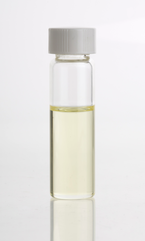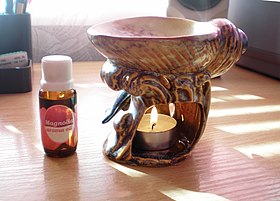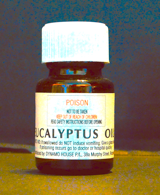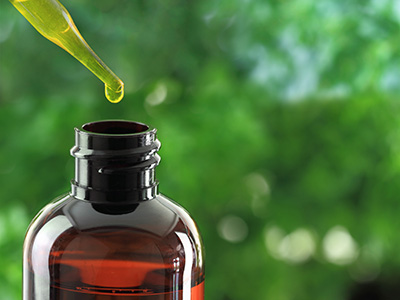The Georgia Poison Center gets a lot of urgent phone calls every day. Two of these calls, on average, involve a category of products that many people might not consider dangerous.
The products are known as “essential oils’’ – highly concentrated extracts from plants – and the victims of such poisoning are usually children.

Dr. Gaylord Lopez, director of the Poison Center, recalls a little boy who recently got into his mother’s eucalyptus oil, one of the well-known essential oils on the U.S. market. The child had to be sent to the hospital, but he survived.
“The problem with eucalyptus oil is that in small amounts it can trigger drowsiness, sedation and even [cause] someone to go into a coma,” Lopez says.
Adults use essential oils to improve their health, relieve pain or improve mood.
These oils have a variety of uses. Some can be inhaled. Some can be massaged into the skin, and some are used in skin care products. Some can be taken by mouth.
One use of essential oils is called ‘‘aromatherapy.’’ It involves applying oils to the skin, sniffing them, or heating them in a device called an essential oil diffuser that disperses them into the air. Aromatherapy products are also available as lotions and soaps.
A Consumer Reports article notes that “promoters of this . . . therapy say it can aid sleep, relieve migraines and nausea, improve emotional well-being and more.”
Essential oils are now big business. In the past year alone, U.S. retail sales of these oils soared 14 percent, to $133 million. That’s not including tens of millions in sales from multilevel marketers who bypass retail shelves and sell directly to people via independent distributors, WebMD has reported.
The dangers involved
Because essential oils are so varied, there are differences in the types of risks they pose. A particular oil may be safe and beneficial for one use and absolutely unsafe for another.

For instance, cumin oil is safe in food, but if applied to the skin it can cause blistering. Also, certain citrus oils in cosmetics may be harmful, says the FDA website. This is also true when certain oils are applied to the skin followed by sun exposure.
On the other hand, several oils are safe for external application but should never be ingested. Some rub-on creams can make a person ill if consumed internally.
WebMD reported last year that a growing number of people are turning up with chemical burns, allergic reactions, respiratory issues, and other side effects from the popular fragrant plant extracts.
Highly toxic essential oils, which should used with care, include camphor, clove, lavender, eucalyptus, thyme, tea tree, and wintergreen oils, according to a WebMD article.
The risk to children is much greater than to adults. For one thing, the tempting sweet smells of some products may attract kids, who are not always careful about what they put in their mouths.
Pediatricians are concerned that Georgia consumers may be unaware of the many potential dangers to children from essential oils.
“Children, with their thin skin and immature livers, might be more susceptible to toxic effects than adults,” according to the National Capital Poison Center. “Depending on how the essential oil is prepared, there could be toxicity from other ingredients; these preparations [may] contain other toxic oils or alcohol.”
Lopez says “the good news” about essential oil accidents in Georgia that is “no one died in 2018.” The bad news is that dangerous incidents keep occurring. The most recent Poison Center data on call volumes showed more than 639 calls about essential oils during the 12-month period, he says.

“Mothers need to be careful — because that adage ‘You are what you eat,’ can also apply to what you spray or slather on,” states the Natural Resources Defense Council.
For example, a mother who is breastfeeding should take care that none of the oils she may apply to her body will touch the baby’s skin for the first six months. Even after that, many oils are still unsafe for infants and toddlers. Pregnant women should also consider the risks of using certain oils.
About three-quarters of all the questions about essential oils that the Georgia Poison Center fielded were concerned with children under age 12, Lopez says. Many of those cases involved children under age 5, he adds.
“Look, when it’s used as intended and used properly, there’s not much risk, but when someone [especially a young child] accidentally gets into some of these more toxic essential oils, we do run into life-threatening issues,” he says.
Cutting through the confusion
As a family nurse practitioner with Tift Regional Health System in South Georgia, Kelly Grummer-Smith says she has spoken to a lot of patients who are misinformed about essential oils. She’s trying to educate them, but also trying to inform other health care providers about public misconceptions.

“I became interested in essential oils when I was a teenager,” says Grummer-Smith, who uses the oils herself. But she says she began to worry when she realized that patients were using such oils on children when the children were too young.
“I could see there was very poor information available,” she said. “[There were] books aimed at parents about using essential oils that had misguided information.”
People may think that if an essential oil or other product comes from a plant, it is safe. But something that is natural is not necessarily harmless. The FDA says many plants produce substances that are toxic, irritating or likely to cause allergic reactions.
Poison centers around the nation warn that essential oils generally are not regulated. Because of that, it is sometimes hard to know exactly what is in a bottle — what the active ingredients are and in what concentrations, and what potential contaminants may be present.
If a container of an essential oil is well labeled, users should read the label thoroughly, and heed the standard advice to “use only as directed.” If more information is needed, consumers should seek it out from reputable medical sources.
The FDA doesn’t have regulations defining “natural” or “organic” for cosmetics. And although the agency regulates labeling for cosmetics and drugs, federal oversight of advertising for essential oils is the province of the Federal Trade Commission.

Fortunately, Dr. Lopez notes, most essential oils “are pretty benign.” But he says “there are certain ones that make me blink a couple of times.” These products contain toxic ingredients and are potentially deadly to children. He has seen what they can do.

The three oils he worries about most, based on “potential ingestion,” are eucalyptus oil (the one can make a child drowsy or even comatose), camphor oil and oil of wintergreen.
For example, the product Campho-Phenique, which contains camphor, is fine when applied topically for cold sores. The problem is not when it’s on the skin, but when a child tries to taste it. “When ingested, you’re talking about an effect that can be quite serious and even life-threatening,” he says.
Ingesting camphor, “as little as one mouthful in a child . . . almost [always] leads to a medical emergency,” Lopez says. The potential for seizures is quite high, he adds.
As an ointment, oil of wintergreen is used to relieve the pain of conditions such as arthritis, or to soothe sore muscles caused by working out. Unfortunately, “one mouthful of oil of wintergreen has about the same toxicity as 21 aspirin pills,” says Lopez. “That’s deadly!”
Judi Kanne, a registered nurse and freelance writer, combines her nursing and journalism backgrounds to write about public health. She lives in Atlanta.

